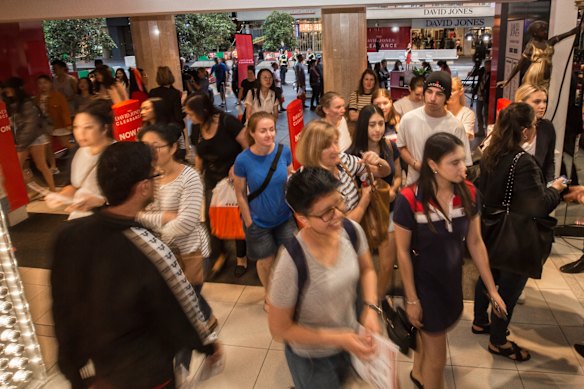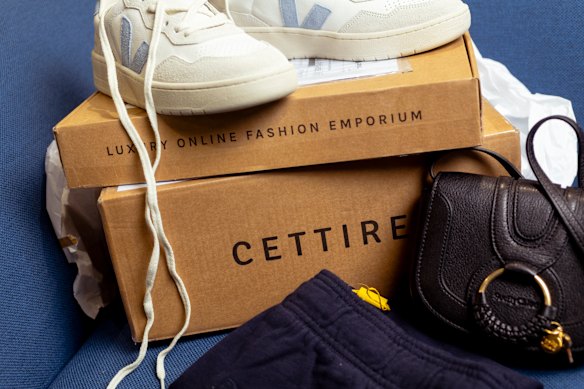Opinion
Bargain-hungry Australians are shopping their hearts out
Elizabeth Knight
Business columnistForget the cost-of-living crisis, Australians opened their wallets and emptied their mattresses to embark on such a vigorous shopping spree in June that retail sales for the month have come in three times higher than expected.
But this rush of retail blood isn’t a display of stronger consumer confidence. Instead, the sales bump has come from left field. The 1.2 per cent boost in June’s retail sales was much stronger than the May rise of 0.5 per cent and the April reading, which was flat.

Households have the money and the desire to spend on big-ticket items as long as they believe they are receiving value.Credit: Scott McNaughton
The catch here is that the buying bonanza has been almost entirely driven by bargain hunting for discretionary goods, propelled by clothing, footwear and household items.
Shares of JB Hi-Fi, Harvey Norman, Nick Scali and Wesfarmers rose on the back of the retail data released on Thursday by the Australian Bureau of Statistics, and even department store operator Myer’s share price moved up on the news.
Most of the retail categories, even food retailing, came in ahead of expectations in June. The one area that didn’t feel the love was eating out and takeaway food, with the sector turning negative in June after a mildly positive reading in May.
But the stronger sales number is a mixed blessing for retailers. While the increased demand and volume of sales is a positive, selling goods at discount is a surefire way of whittling down their profit margins.
The other worry is that the big spend in June may not be repeated over the next couple of months, meaning any gains to be had will be slowly unwound.
What the data does support is that households have the money and the desire to spend on big-ticket items as long as they believe they are receiving value. It also indicates that Australians have not been unduly fazed by the international economic turmoil introduced by Trump’s tariff attack.
However, there will be questions asked about whether this strong buyer sentiment will affect the Reserve Bank of Australia’s deliberations on whether there are any risks associated with cutting interest rates in August.
Most are still betting that the latest inflation figures, which are inside the Reserve Bank’s target band, will be enough to convince the central bank to ease rates by 25 basis points.
A couple of rate cuts this year will almost certainly boost the coffers of consumers and give them renewed confidence to head to the shops. The one trend that looks set to stay put is the rise of the value shopper.
The retailers primarily focused on serving local shoppers are getting the message, but spare a thought for those businesses that export to the US, and are now caught in Trump’s abandonment of the de minimis rule – which until now offered a duty-free exemption for goods under $US800 ($1240) entering the US.

Cettire was once valued at almost $2 billion. Its current market capitalisation is just over $100 million.Credit: Dominic Lorrimer
Luxury online retailer Cettire, which sells luxury apparel and accessories at a discount to international markets, is a case in point. It has been swept up in Trump’s policy that originally targeted Canada, China, Hong Kong and Mexico.
Given the US represents 40 per cent of Cettire’s market, the policy has punched a hole in its business model, which has already been buffeted by a laundry list of issues. Cettire’s shares slumped by more than 20 per cent on Thursday, bringing its share price fall for the year to near 80 per cent.
In a statement to investors on Thursday, Cettire said it was assessing the full implications of the tariff changes. One option put forward is to localise its offering and make it less reliant on the US.
How other Australian brands that sell into the US will fare will largely depend on what tariff Australia is ultimately hit with. While the Labor government remains hopeful of a 10 per cent duty on our goods sold into the US, Trump has raised the spectre of all counties that have not yet signed a trade deal being slugged between 15 per cent and 20 per cent.
So, it’s a nail-biter for exporters, but at least Australians appear to be in shopping mode.
The Market Recap newsletter is a wrap of the day’s trading. Get it each weekday afternoon.